What Is Maxi Dress Style? Unveiling the Charm of This Fashion Staple

A maxi dress is a long, flowing garment whose hem reaches the ankles or floor. The term “maxi” has been used since the late 1960s to describe ankle-length, typically informal dresses. This ankle-length cut sets the maxi apart from shorter styles: mini dresses end above the knee, midi dresses fall to mid-calf, and maxis hit around the ankle. Compared to a midi dress, a maxi often features a more relaxed, billowy silhouette, giving an elegant, elongating effect.
- Mini dresses: End above the knee; very short and often flirty.
- Midi dresses: Hem hits mid-calf; versatile and work-appropriate.
- Maxi dresses: Fall to the ankles or floor, typically long and flowing, creating a relaxed, graceful look.
History and Evolution
The maxi dress emerged as a fashion force in the late 1960s and early 1970s. It reflected the era’s love of free-spirited, bohemian style, often worn in loose silhouettes and ditsy floral prints. As Vogue notes, 1960s fashion “meant bohemian maxi dresses in ditsy florals, loose and billowing silhouettes” By the early 1970s, the maxi dominated women’s wardrobes – “THE decade of the maxi dress” – as hemlines dropped from the Mini-skirt’s thigh-length down to ankle-length for a more “natural, earthy” loo. Peasant- and prairie-inspired maxis with lace details or 30s-style ditsy florals became popular, echoing the hippie ethos of comfort and romance.
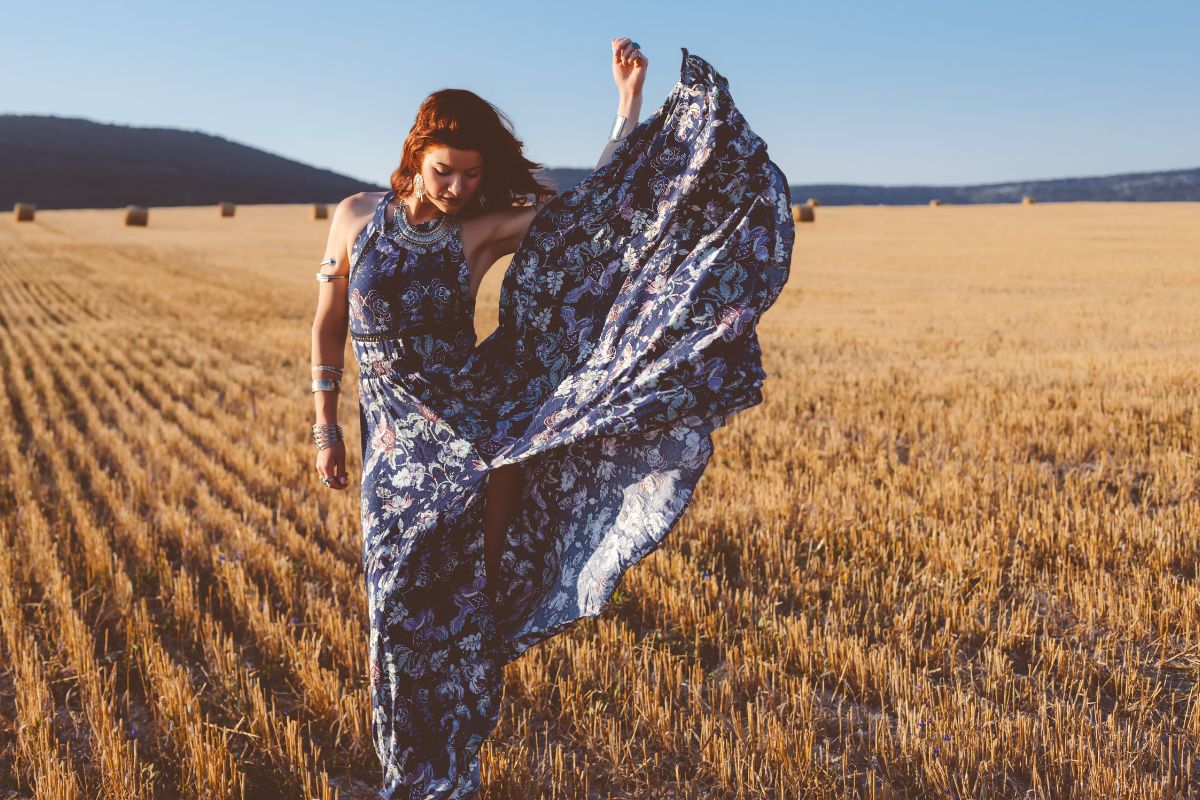
After waning popularity in the 1980s, the maxi dress resurfaced in the 1990s and 2000s during a boho-chic revival. Designers like Chloé and Valentino began reinterpreting the maxi for modern audiences, and retailers like Free People and Anthropologie made them a casual staple. Today, the maxi is as fashionable as ever – for example, Chloé’s Spring 2025 line features tiered, whimsical maxi dresses. Runways and magazines highlight maxi trends; British Vogue calls the bohemian maxi a “leading dress trend” for SS25, thanks to designs by Chloé and others. Harper’s Bazaar similarly notes that designers are showcasing “billowing pleats” and “cascading ruffles” on updated maxi silhouettes this season.
Fabrics, Cuts, and Styles
Maxi dresses are made in many fabrics and cuts, but they share the long, flowing silhouette. Common fabrics include:
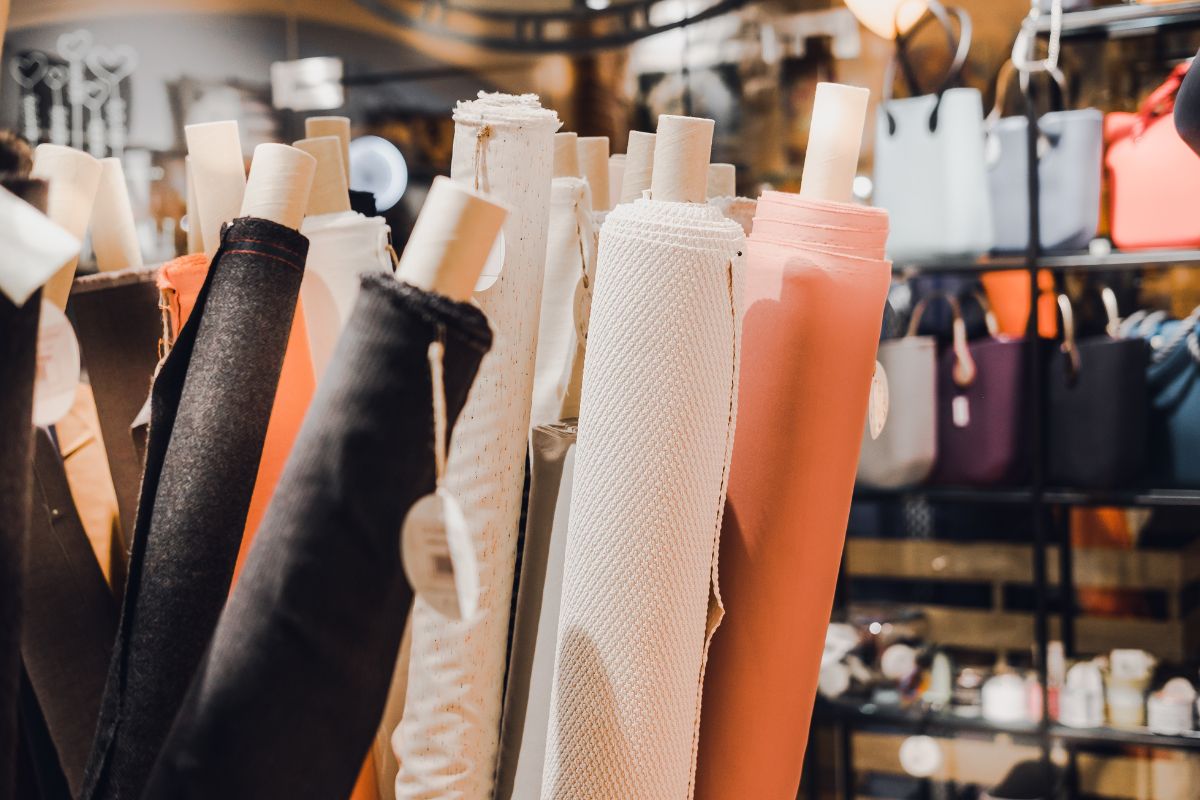
- Rayon: A lightweight, drapey knit with a soft feel, often printed with florals. Its flowy drape makes it ideal for a feminine maxi.
- Cotton: A breathable, natural fabric that can range from crisp to soft. Cotton maxis are casual and comfortable, great for daytime and summer.
- Linen: A textured, cool fabric that gives a laid-back, boho vibe. Linen maxis feel breezy in warm weather and often come in solid colours or simple stripes.
- Silk: A luxurious, smooth fabric prized for its elegant drape. Silk maxis are often reserved for formal looks, evening gowns, or upscale resort wear.
- Chiffon: A sheer, lightweight fabric that creates a wispy, romantic effect. Chiffon maxis usually have lining and may feature ruffles or layers for extra volume.
- Jersey knit: A stretchy, cotton or synthetic blend that hugs the body. Jersey maxis are very comfortable and often used for casual, day-to-day styles.
- Modal: A smooth, breathable knit similar to rayon. Modal maxi dresses feel cool and soft against the skin, draping gently like a premium t-shirt fabric. ic
Silhouettes and cuts vary widely. Many maxis have an empire waist (high bodice under the bust) or a fitted bodice with a flared skirt, emphasising length. Necklines can be V-neck, scoop-neck, halter, off-shoulder or strapless; sleeved options range from sleeveless to long sleeves.
Tiered or A-line skirts are common, and some have high slits for ease of walking. Bohemian styles often add ruffles, embroidery, or smocked bodices for a romantic touch. In short, maxi dresses can be very loose and floaty or slightly shaped at the top, but all share that ankle-length sweep.
Key Characteristics
Maxi dresses are known for their comfortable yet elegant feel. They often feature bohemian or floral prints, paisleys, or ethnic-inspired patterns, reflecting their hippie heritage. Even solid-colour maxis usually exude a romantic or resort vibe. The long hem means they provide full coverage, but the flowy skirt and lightweight fabrics keep them from feeling heavy. According to one retailer, maxi dresses’ “soft, flowing fabrics…drape gracefully” for a flattering silhouette, whether in lightweight cotton, silk, or stretch jersey. This makes Maxi forgiving on the figure and suitable for many body types.
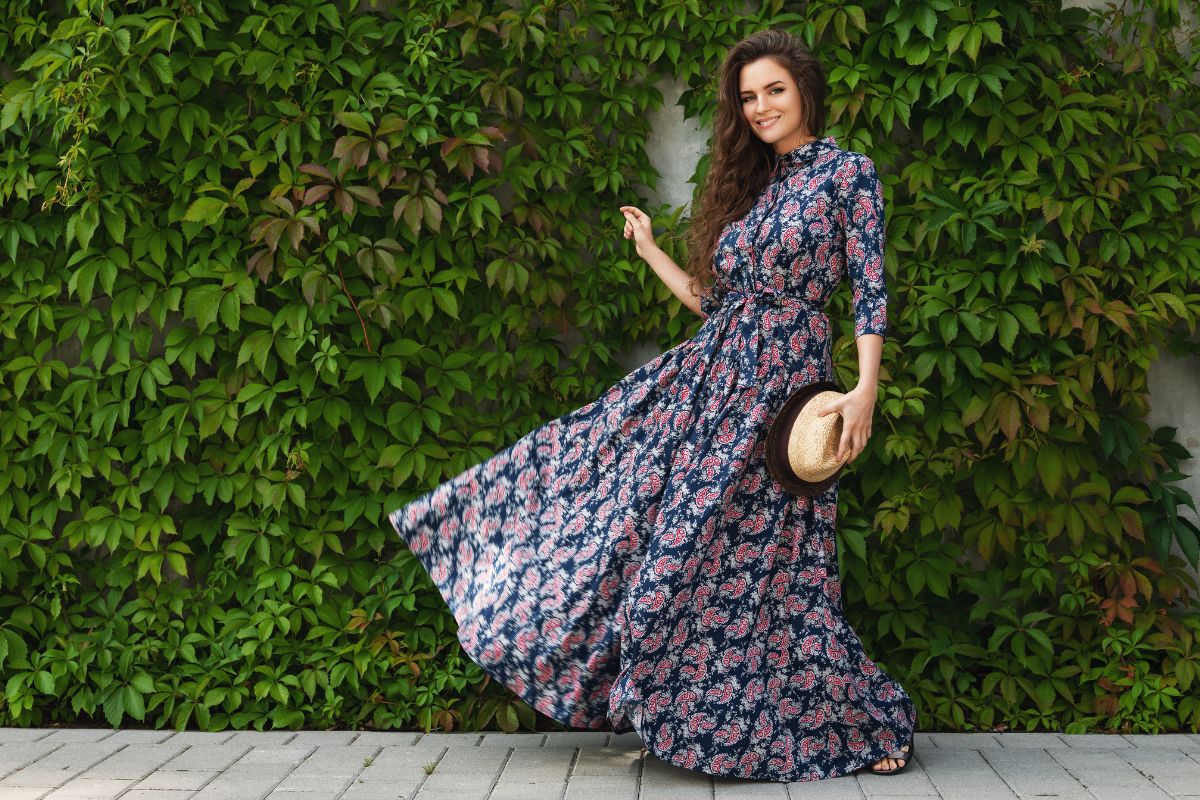
Maxis can feel casual or dressy depending on the details. A simple cotton jersey maxi with sandals reads as easy daywear, while a silk chiffon maxi with embellishments can serve as an evening gown. Designers often play with texture and trim – for example, ruffles, lace panels, or bold prints – to keep even a long dress looking fresh. In all, the maxi’s key trait is its floor-grazing length combined with a breezy, feminine ease.
Styling and Versatility
One reason maxi dresses remain so popular is their incredible versatility. They can be dressed up or down for many occasions:
Casual Daytime
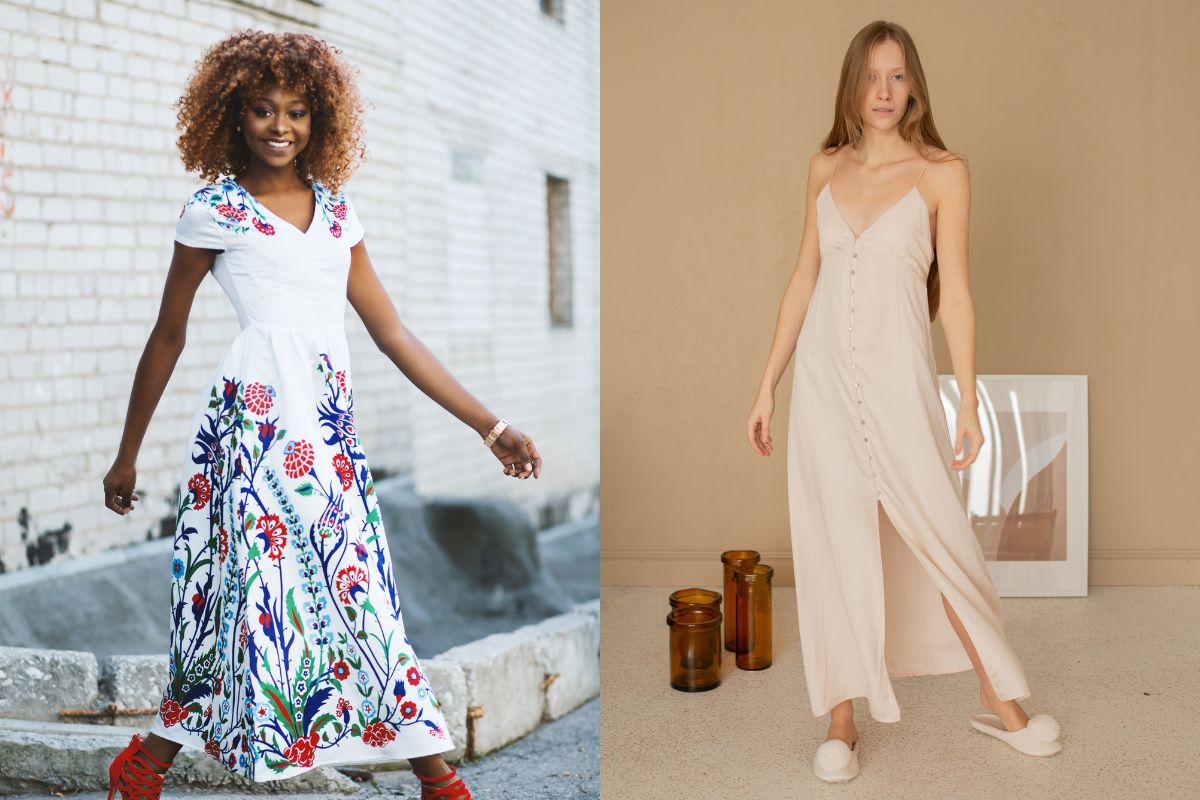
A cotton or jersey maxi is an effortless everyday outfit. Pair it with flat sandals or sneakers and a denim jacket for errands or brunch. You can belt it at the waist to add shape, or tuck it into a cardigan on cooler days. A casual print or solid pastel is perfect for daytime ease.
Beach and Vacation
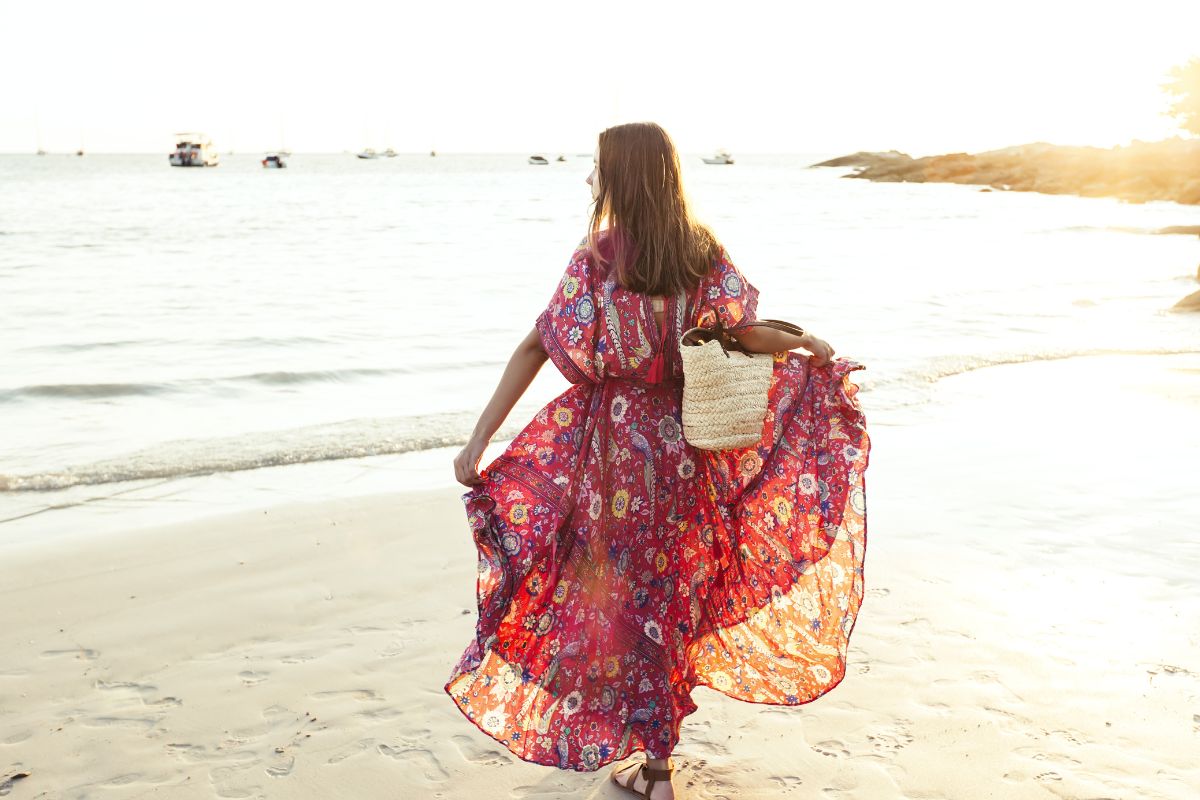
Maxi dresses make great beach cover-ups or resort wear. A lightweight linen or gauzy cotton maxi with a halter or tie-neck looks chic over a swimsuit. On vacation, wear a flowy floral or solid maxi with flip-flops, a sunhat, and sunglasses for a relaxed look. Maxi sundresses in bright prints are ideal for seaside evenings.
Formal and Evening

For dressier events, opt for a more structured or embellished maxi. Silk, satin, or lace maxis can serve as bridesmaids’ or cocktail gowns. Think classic styles: a strapless chiffon maxi with statement earrings, or a black jersey maxi with a shawl and heels. Designers often feature maxi gowns with luxe details – for example, long black capes or sequins – that elevate the look. For formal wear, pair with heeled sandals, clutch bags, and refined jewellery.
Maternity Wear
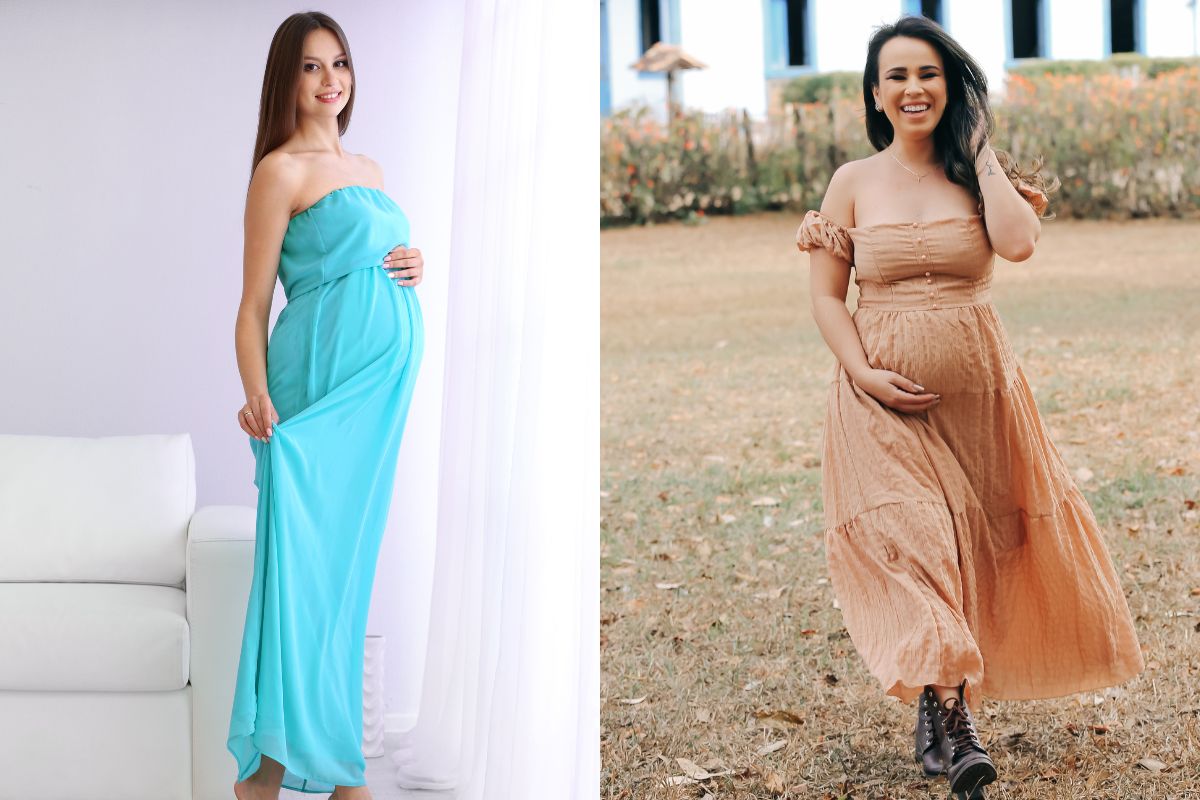
Pregnancy and maxi dresses go hand in hand. The long, stretchy silhouette accommodates a growing belly comfortably. Maternity maxis often use soft knits or stretch panels. Retailers note that “soft, flowing fabrics… drape gracefully” over the bump. Styles like empire waists or A-line cuts provide room at the belly while still being flattering. Many maternity maxis come in jersey, cotton, or silky blends to ensure comfort. They look cute at baby showers or outings, and can be layered with cardigans. Pair maternity maxis with flats or wedges and minimal accessories. In sum, expectant moms find maxis a flattering, low-effort outfit.
Beyond these examples, maxi dresses are at home in many settings. They can be worn year-round: in cooler months layered with tights, boots, and a coat, or in summer with sandals. The same dress can transition from a picnic to a party simply by changing accessories. As one brand puts it, maxi dresses “provide the comfort, elegance, and effortless style” for any occasion.
Design Trends and Notable Brands
- Current Trends: Fashion editors highlight several popular maxi trends. Boho-inspired tiered maxi dresses are big – think cascading ruffles and ethnic prints – thanks to designers like Chloé and Isabel Marant. Crisp all-white maxi dresses are also trendy for 2025; designers have reimagined white maxis from sheer gauze to linen shirt styles. For a chic evening look, the strapless maxi is making a comeback, often with corset-like bodices or bold cutouts. Cape-style and one-shoulder maxis have appeared on runways (e.g. Bottega Veneta’s draped cape dress).
- Prints and Textures Remain Important: florals, paisleys, eyelet lace, and even tie-dye are common on today’s maxis. In general, designers are reinterpreting the classic maxi with modern details – high slits, asymmetry, or mixed fabrics – to keep the style fresh.
- Brands and Designers: Many fashion brands are known for their maxi dress collections. High-end designers like Chloé (a leader in boho-chic) feature flowing silk and chiffon maxis, and Valentino often includes romantic printed gowns in its lines. Oscar de la Renta and Diane von Furstenberg also produce elegant long dresses (the DVF wrap aesthetic is sometimes offered in maxi length). On the ready-to-wear side, labels like Farm Rio (Brazilian resort wear) and Free People specialise in bohemian maxi dresses; Anthropologie and H&M regularly carry flowy maxis in their collections. Even fast-fashion retailers like Zara and Mango offer trendy maxi styles each season.
For shopping, major retailers feature huge maxi selections. (For example, Nordstrom and Bloomingdale’s both stock maxi dresses by various brands.) Many bridal and bridesmaid stores also include maxi dresses in their formal offerings. Maternity brands such as Angel Maternity or PinkBlush highlight the maxi as an ideal pregnancy style, providing dresses in stretchy fabric that grow with you. In short, the maxi dress is a fashion staple carried by a wide range of designers, from couture names to high-street brands, branding to its enduring popularity and versatility.






